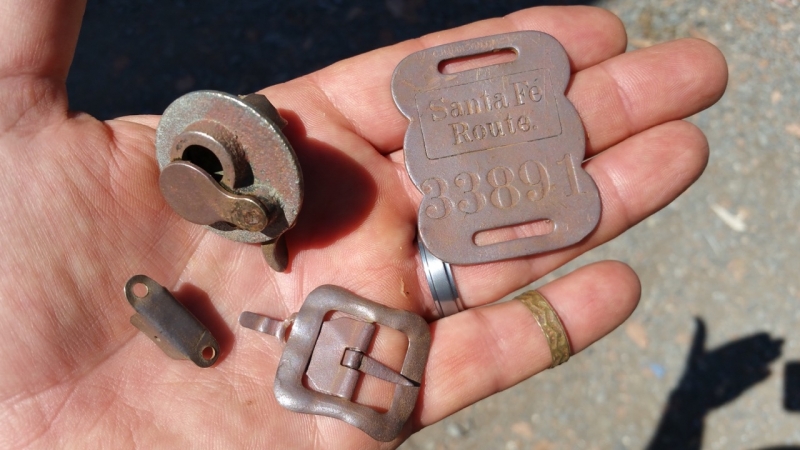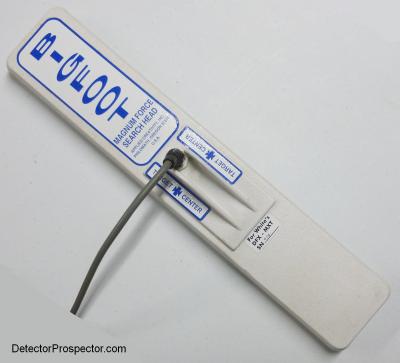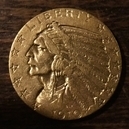Leaderboard
Popular Content
Showing content with the highest reputation on 01/03/2017 in all areas
-
How many New targets are we really finding? To answer this question it is a bit more 'complicated' than just a new coil vs an old coil or a new detector vs an old detector although those are part of the variables. This question now comes to mind when I am using the GPZ 19 on previously worked patches. When I go to the beach and grid a box that is 100x100 with my 3030 I will find targets. If I assume there are 50 targets within that area and I get 20 I might be doing pretty good without knowing for sure the total potential targets and how long I take to hunt it out. I will not find them all ... I will miss some ... and then I'll move on to another pocket ... sometimes. The number I miss depends on my grid pattern, the type of target, if I overlap my swing, soil/salt conditions, discrimination level, shape of target and of course, depth. If I am finding really good targets and I go back over this area I might find 5 more that I missed the first time ... and I still haven't gotten them all. If a friend of mine comes over that same square with his White's Surfmaster Dual Field PI he might find 15 targets. Some of these targets would be new (12) and some missed (3). (Those are just guesses but you get my point.) The point is that the PI will find New targets because it can go deeper and see invisible targets but it is also possible to find missed targets that my 3030 could still see if I went over it. When I use the GPZ 19 looking for meteorites I am primarily looking for missed targets because the targets are so shallow. This includes going to a new area previously undetected because part of the 'miss' is not going to an area because of luck or inadequate research. Now when I am out on a gold patch with the GPZ 19 I am looking for missed targets and New targets. An advantage of the GPZ 19 on the missed targets is that it is a much larger coil. It is also a more advanced, quieter technology. (Missed targets need to be a bit larger because the GPZ 14 will see smaller targets than the GPZ 19.) New targets (those not detectable with the GPZ 14) would be those that are deeper and those 'invisible' to the GPZ 14. My mentors have been going over old patches with new technology for years. Some of what they find is New and some of what they find is missed even to this day. So this is an 'old game' with just a new player (me) hoping to be productive while swinging. I want to find something every trip. Am I going to find more missed targets than New targets? It depends on where I search so I need a mix of new ground and hunted out patches. There is still deep gold! Slow, deliberate and methodical gridding will have to win the New targets (if the patch has depth) and the missed targets will follow. This will mean many skunk days. The old patches aren't being replenished unless it is a wash. Mitchel (added after Chuck's response))5 points
-
Hi All, I like H.Glenn Carson's books. I like the way he tries to get you into the right mindset for what you are hunting for. I wrote this little article several years ago kind of along his view of trying to get you to think rather than just telling you where to go. I find it helps you to own the information. Maybe some will find it helpful. HH Mike So you want to find gold with a metal detector? There are three forms of gold you can find with a metal detector; gold coins, gold nuggets and gold jewelry. I’m going to focus on gold jewelry, and further refine that focus to just gold jewelry found at inland sites, like parks, schools, athletic fields and play grounds. Tip number one: You hunt gold jewelry with your mind. Next time you are out and about, take a look at what type of jewelry people are wearing. What do you see? Who is wearing the gold? What type and size of gold is being worn? What part of the body is it being worn on? Almost everybody is wearing some type of gold jewelry. It may be in the form of a chain around a neck or wrist, to a ring on a finger, to an earring in the ear, but nearly everyone is wearing something. Married couples have wedding bands. Most post adolescent girls, young ladies and women are wearing multiple rings and often bracelets of some sort. The high school and college graduates are wearing class rings. Both female and males are often wearing gold chains. The males often just wear a chain, while the females often wear a chain with a pendant attached to it. You’ll even see ankle bracelets and toe rings. You will notice some cultures wear more than others. Some cultures will wear more and larger gold jewelry. But there are more things to look for than just culture. Pay attention to life style as well. For example the hip hop and rap lifestyles tend to wear bigger and larger jewelry. Can you say Bling Bling? What type and size of gold? The smallest gold is often worn in the ears. Little round studs and small designs, sometimes with stones. Various size loops. Often it is hard to tell but maybe you can notice what type of backing is used to hold them on. Probably easier to look at the women in your own life or visit a jewelry store or the jewelry counter at a big box store and learn about the different types and styles of making earrings stay in your ears. While you are there, study the clasps of chains and bracelets and the various sizes of rings. The girls/women wear the small diameter rings, ring sets, and often they will contain stones. The women will also wear the small gold bracelets, sometime with pendants, sometimes with stones, and small diameter chains, often with pendants. The men will wear the larger rings and the larger chains, and as mentioned above, certain cultures and lifestyles will wear even larger than normal gold. I was in a gold buyers shop a few months back and I saw a gentleman in there that had to have had at least $5,000 dollars worth of gold chain around his neck. Big links in the chains with big pendants in the shape of initials. He wasn’t selling, he was buying. So you have spent some time studying people and the jewelry they wear. And you have made the trip the jewelry counter or store and looked at how they are designed to stay on the body part they are intended to be wore on. You have seen the various earring retention systems; you have looked at the clasps of chains and bracelets. You have noticed the styles and sizes of rings. The next question is, “How is the jewelry separated from its respective body part?” That is a very good question. How do the earrings get out of the ears? How do the chains get off the neck? How do the rings come off the fingers? There are only two answers to that question. 1) They are taken off by the owner on purpose, or 2) They are accidently dislodged somehow. Let’s look at these individually. The first reason identified for jewelry separating from its respective body part was that it is taken off by the wearer on purpose. What is going to cause someone to remove a piece of jewelry? When I was young I remember my mom and grandmother taking off their wedding bands and placing them on the window sill before they did the dishes. Why? The main reason, of course, is for safe keeping. The item is removed so that it wouldn’t get lost or damaged. Let’s take that same thought pattern outside. So now we are outside. Folks are taking their jewelry off for safe keeping but where do they put it? Where is the first place you would put your ring if you took it off for safe keeping? In your pocket of course! What if you didn’t have a pocket? You’d give it to someone else who did have a pocket, or you’d put it somewhere you were pretty sure it would be safe. Somewhere you were confident you wouldn’t lose it, most likely with other stuff that you had to do the same thing with, or you would put it into something else, like a bag you brought with you. The second reason identified for jewelry separating from its owner is by it being accidently dislodged. Let’s think about that. What type of activity does it take to dislodge something that is designed to stay on your body unless you purposely remove it? Let’s use a men’s ring for an example. What type of activity does a man need to be involved in to lose his ring? He either has to have his hand in something that could potentially remove his ring when he removed his hand, or he had to engage in some sort of activity that would cause the ring to leave his finger. What would cause a chain to be dislodged from around a neck? The clasp has to either come open unexpectedly or the chain has to be caught in something that causes it to break. What would cause an earring to leave an ear? It has to lose its fastener, or be caught in something that would pull it from the ear, or both. How is something that is placed in a pocket or bag for safe keeping accidently leave its place of safe keeping? It has to fall out or be spilled out, or be accidently pulled out. Tip number two: Gold has to be hidden from eyesight for us to find it. How come when a piece of jewelry is lost the owner of the jewelry didn’t recover the lost piece? There are only two answers to this question. 1) They either didn’t know they had lost it, and/or, 2) It was lost in some type of media that could hide it from their eyes. There was something that prevented it from being found by only looking for it with their eyes. It could be sand, woodchips, gravel, grass, trash, leaves, anything that once something is dropped onto it or into it that makes it difficult to find with just your eyesight. Tip number three: Learn the loss characteristics of the items you find. Seek the answer to the question, “Why did I find what I found where I found it?” Once you think you have the answer, validate it by hunting other areas where that loss characteristic could be repeated and see if you find jewelry there. A validated loss characteristic is more valuable than the jewelry find itself. A few examples where I have found something and identified the items loss characteristic(s): I found a nice herringbone style 14kt gold chain on an athletic field. It was intact and the clasp was attached to its respective counterpart. The guy would have had to lose his head in order to lose the chain. But here it was down in the grass and there was no severed head with it. So how did it get there? This is an example of an item that was taken off for safekeeping and then lost. It wasn’t torn off, or flew off over his head, this had to come out of a pocket or bag, and I believe it was from a pocket as it wasn’t in a location where bags and such are normally staged. So what activity would normally take place where I found the chain that would cause it to come out of a pocket? Since it was a soccer field, I deduce it was something to do with running or perhaps falling down. I have found many items on athletic fields that were originally placed into a pocket or bag for safe keeping that was then subsequently lost. I found a little 10kt gold chain and pendant with a broken chain in the sand at a school playground. It was quite obvious from the broken chain that it had been torn from a child’s neck in some type of play activity. From the equipment around the find, along with subsequent chain finds in the same area around that equipment I deduce it is a great area for games of tag or some such activity as all the chains I found in that area have been broken. (a validated loss characteristic) I found a nice 14kt gold wedding band with three .20 carat diamonds mounted on it about five inches deep in some woodchips. Studying the situation, it was easy to see that a parent had been sitting on the curbing around the play ground, leaning back with their fingers buried in the loose wood chips watching their children play in the adjoining playground. When they removed their hands from the woodchips the ring was left behind and the parent either didn’t notice the ring was gone or noticed it but couldn’t find it. (validated loss characteristic) I found a nice wide wedding band near a goal post on a soccer field. It had obviously been left for safe keeping in that location, either with other possessions, or by itself and was either not recovered or fell out of a bag when the other possessions were recovered and hidden by the grass. (validated loss characteristic). Ok. So you have figured out the most likely reason a piece of jewelry was lost. Now what? Once it is understood why or how a particular item was lost, the next step is to seek out places where that particular loss characteristic can be repeated. Tip number four: Don’t dig trash, dig gold trash. Gold jewelry is a low conductive target on a metal detector and is found in the same range as aluminum trash. It is often a small target. Remember all those earrings and chains and rings and bracelets you saw at the jewelry counter? Small, low conductive objects that hide in the aluminum trash range can be tedious and hard to find. Even more so if you have to factor in ground minerals that can skew or even hide the signal of the jewelry item. So let’s think about that; small valuable targets mixed in with small aluminum trash that produces the same type readings on your metal detector. That means that to find the gold jewelry you will also have to sort through the trash. Doesn’t sound very promising, does it? Am I saying that to find the gold you have to dig it all? Nope. That is not what I am saying at all. What I am saying is that to find gold jewelry you have to dig all targets that have the highest probability of being gold. Now there are sites like woodchip and sand playground areas where you will want to recover every signal. But to do the same thing in a high use grassy park, athletic field or playground, trying to recover every signal is counterproductive. From your visit to the jewelry counter, you may have noticed that some of the chains have quite a bit of weight to them. A nice gold chain is a good find! Good money! So off I go to hunt chains. I’ve already used my mind, located a promising turf spot to hunt for chains and start digging all the pull tab signals. Hours later I have a hundred plus pull tabs, but no gold chains. Why? I was digging the wrong signals. Pull tabs would be the right targets to recover if I were hunting large rings, but worthless targets to recover if I am hunting gold chains. Especially so if you were in a site that you were confident would produce chains but not large rings. Get the picture? Let’s look at it a little differently. Let’s say that I get to my chain site and start digging all the signals. Now I have a chance to find a chain if it is there, but because I am digging everything I make very little progress on my site coverage, using up energy and time on non-chain targets. I have essentially cut done on my odds of actually finding the target I went out to find. To have the best odds of finding that gold chain I went looking for, I need to focus on signals that could actually be a gold chain and only recover those signals that could actually be a gold chain. Which leads to: Tip number five: the more ground you cover, the better your odds of recovering what you are looking for. By focusing only on the signal I’m after I can cover more ground and increase my odds of actually finding my desired object, which in this example is a gold chain. Tip number six: Gold is where you find it. Gold prospectors have a saying, “gold is where you find it.” That means that you hunt gold where it has been found in the past. Believe it or not, that same saying is true for jewelry. The characteristics that cause a piece of jewelry to be lost and hidden for you to find it with a metal detector are apt to be repeated again and again in the same location. When a gold prospector finds one nugget, he hunts the area carefully again, hoping to find another. When he does find another nugget in the same vicinity, it is called a “nugget patch”. As inland jewelry hunters we, too, are looking for a “patch”. In our case, a patch is a site or location where a particular loss characteristic can repeated again and again. We are not looking so much for that random find but rather that site location where that loss can be repeated again and again. That is a “patch” for a jewelry hunter. A successful jewelry hunter locates patches and then hunts his patches. Many of my jewelry items have come from the same locations that I have hunted again and again, another words, I have found them in my “patches”. Tip number seven: Hunt clad (modern coins) to improve your site reading skills. You say, “Well Mike that is all well and good for you. You have been doing this for a while now and know where to look. What about those of us which are new to the hobby, or maybe coming over to inland jewelry hunting from hunting relics or old coins?” My answer to you is to ‘hunt clad’. Sounds counter intuitive to hunt clad to find gold, but it’s not. Just like the relic hunter hunts for the iron to find the hot spots, so the inland jewelry hunter hunts clad to find the hot spots in parks, athletic fields and school playgrounds. Remember, unlike relics or old coins, jewelry is lost on a daily basis, just like modern clad coins, and often for the same reason. Clad will validate your site reading skills. Recovering the gold: The equipment. If you are going to focus on inland jewelry hunting with a metal detector there are certain features that make it easier to find. Just like any tool, the more appropriate the tool to the task, the easier the task becomes. Working on your car is much easier and efficient with a socket wrench set as compared to having only a pair of vise grips. You could still get the job done with the vise grips in many cases but it would be a tedious and tiring affair. The same thing can apply when it comes to your jewelry hunting tools. You can find jewelry with any metal detector, but it is easier if the metal detector has certain features. The first feature your detector needs is the ability to focus your attention onto your desired target signals. The easiest way to do this is with tone ID. Tone id allows you to discriminate the audio signals with your ears. If you are hunting ladies rings, you have to be able to tell the foil signals apart from all the other responses. Tone Id allows you to do this fast and easily. The better you can focus the tone id onto a certain conductivity range, the better the detector will function for jewelry hunting. A second, and a complimentary feature to tone id is Notch Discrimination. Notch Discrimination is the ability to discriminate out (or in) a range of target signals independent of the base discrimination setting. Again, focus is the key. The more you are focused on the desired signals, the more of the proper signals you will recover for the amount of area searched and the greater will be your success. The third feature is sensitivity to small low conductors. Traditionally this has been accomplished by using higher frequencies units, and is still preferred; however there are some machines on the market today that can give the needed sensitivity with lower frequencies than has been used in the past. Still, the bottom line is that your detector needs to be able to put out some heat on the lower conductive targets. The forth feature is recovery speed. How fast the machine resets after reporting so that you can hear the next target. This is important as the objects you are looking for are lying next to, below, or above other objects that you are not looking for. And they are small. My first gold jewelry find was two gold rings on a large paper clip. The paper clip response nearly completely masked the ring responses but the Fisher CoinStrike I was using at that time had a fast enough response speed that I was able to hear them as distinct, separate signals. I consider those the four most important features a metal detector needs to be a useful gold jewelry hunter. If you live in an area where the ground minerals are influential on signal responses like I do then you have to include ground cancelling features. There are other factors that can make one machine better than another like visual signal presentations, coil selections and such like. But as long as you have a unit that is fairly quick responding and will let you focus on a desired signal and put some heat on it, you are good to go. HH Mike Hillis4 points
-
Your very own jewelry store. What is cool about this gold ring is not that I found it with a lowly entry level metal detector. What is really cool about THIS gold ring is that I found it where I expected to find it. It is my second gold ring find from this exact location and is my third ring find from the general area. My first ring find at this site was found with a Tesoro Golden uMax while I was proving and validating a ‘loss characteristic’. I had found a ring at a park and had identified it with a particular ‘loss characteristic’ or in other words, “the reason I found it where I found it”. I had subsequently verified this particular ‘loss characteristic’ by looking for and hunting another location that mimicked the first site. The second site produced a nice ladies silver ring. So with this knowledge twice validated under my belt I put my Aerial Map CD in my computer and started making a list of other locations that looked like they could provide the opportunities for this particular ‘loss characteristic’. One of those sites I had identified from my aerial map investigation was this particular site. My first ring find with the Golden uMax at this site thrice validated this particular “reason I found what I found where I found it” , i.e. a loss characteristic, and not just a lost characteristic, but a VALIDATED loss characteristic. At another site I had identified from my map review for this particular ‘loss characteristic’ produced this nice gold ring. Unfortunately I didn’t have the presence of mind to look for the stone I knocked out with my screwdriver when recovering it. The take away: A "validated loss characteristic" is like owning your very own jewelry store. HH Mike4 points
-
You are welcome to play with my V3i if you want to drive. I'm just over in Des Moines. Just about any time is good. Let me know if you're interested.3 points
-
I've been working on a 3D mapping system. I've put together a sample map of Rich Hill, Arizona with some mine information. There is a bunch of stuff these maps can do but I'm not sure if they will work on enough peoples browsers to make it worthwhile to pursue development of this system. Please give it a try and tell me what you think. (Caution - this is about a 7 megabyte map and may take a while to load if you are on a slow connection) 3D map HERE. You can move around in the 3D environment with your mouse. Pan, Zoom and get Information from the mines. Try typing in an "r" and watch the mountain spin in 3D. Type an "l" to turn on or off the mine labels. It's a lot of fun and could be a cool feature for researchers if it works for enough people. This map is smoking fast on my development machine using the latest Firefox browser but doesn't work at all on my Safari browser. It works in Edge, Internet Explorer and Firefox on my Windows 10 computer but it's clunky. It doesn't work very well on my Windows XP machine in the latest Firefox. Give it a try and let me know if you like it or hate it. If it's working well for you might consider going to a bigger map version for more fun.2 points
-
Hi Paul, I use my usual conservative settings which are..... Threshold: 27 Audio Smoothing: OFF Volume: 8 (I use the B&Z booster through twin speakers) Volume Limit: 8 to 10 Ground Balance: Tracking Gold Type Mode: General for solid heavy nuggets over 10 grams, High Yield for rough gold or solid nuggets 15 grams and down Ground Type Mode: Difficult, because the ground here is nasty Threshold Pitch: 60 Ferrite Balance: Perfect at all times (regularly check it) The key to these settings is the Audio Smoothing OFF, that's were all the information is and I will not sacrifice any of it for any other setting unless the EMI is extreme and I'm too stubborn to call it quits. Normal Ground Type mode is a different animal altogether, the detector is more aggressive on the Ferrite in this mode, subsequently it can drift with temperature so check it regularly. High Yield is the deepest punching Normal mode if the ground conditions will allow, High Yield is also less susceptible to EMI and rub and bump noises. General irons out ground minerals better. JP Pic of a 2.2 gram piece at 18" found using the GPZ 19 coil and High Yield Normal in quiet soils.2 points
-
Bugger, my mouths watering, rivers up and be probably months before I get out again. You put the hex on us FNQers JP, but the rain is lovely and very welcome(been a long dry) But good on ya, when we`ve had enough liquid sunshine we`ll send a bit your way.............2 points
-
New years day I headed out early with the GPZ 7000 and GPZ 19 combo determined to make a positive start to 2017. There's one section of ground I've always struggled with because its so variable with salt signal mixed in. With the big coil the salt signal increases but the ground noise proportionally decreases, also because I was sticking to my guns and using the General/Difficult modes the reduction in ground signal and also salt signal brought things down below the localised ground signal behavior of the GPZ 14 coil. (I just re-read this and it sounds a bit inside-out, basically the modes and coil size allowed me to operate in an area that usually makes things difficult with the 14" coil). Couple of hours later and I got a repeatable low/high on the edge of some surfacing, not getting my hopes up I proceeded to chisel out compacted clays and wash due to the target being in a cattle pad. 10 inches down and I hit what I considered to be virgin ground, 7 inches and buckets of sweat later and I had a solid ball like object clunking in my scoop. Initially I thought it might have been a very large musket ball but closer inspection dragged my growing frown into a full-on grin. Eureka a 12 grammer!! That's over 2 ounces in three sessions at this location now. SteveH this is the exact same type of detecting you and I were doing in WA, sticking to the larger coils and spending time in the deeper ground. You need to get into the zone with this method because your chances of NOT hitting a nugget are high, but the rewards are well worth the sacrifices. JP2 points
-
A decorative ring has been found in the Nottinghamshire woodlands by an amateur detectorist. "Mark Thompson, who spray paints fork lift trucks, was in the famous Nottinghamshire woodland for just 20 minutes when his metal detector sounded. The 34-year-old, who had only taken up the hobby 18 months ago, was expecting to find something innocuous. But as he shovelled the dirt, a glint of gold emerged on ornate piece of jewellery with a precious sapphire. Auctioneers have since told him that the precious ring could fetch between £20,000 and £70,000." The rest of the story and lots of great photos at https://www.thesun.co.uk/news/2435181/robin-hood-sherwood-forest-medieval-ring-found/2 points
-
I guess it comes down to the individual whether you believe your missing targets. Personally I believe I am always missing targets more especially as the day gets on(more baked brain). Ties in with Steves thread re ground coverage, depends on ones approach on the day. New targets in old ground that is where the 19 comes into play, gets deeper targets and those others that it reaches because it handles the ground better as you`ve pointed. Are any targets missed targets? only before, not when you hit them. Don`t know of a formula that will get you gold every day, but a belief you will, always helps. The rest is up to the GoG, and she`s a fickle b....h.2 points
-
The weather was a little warmer today so I decided to travel about 30 miles to the park where I've found lots of old coins. The area used to be used as a lakeside recreation park in the 1920's and has been very good very to me. I searched for a couple of hours hoping the MX Sport would pull some old coin that my XLT had missed. It seems that the MXS is intended to be swung a little slower than the XLT so I didn't cover as much ground as I'm normally would have. Maybe it was just me trying to pick through a lot of trash and isolate good signals. Anyway, two hours of searching resulted in one recently drop quarter and several really dip digs. After I took a short nap in my camper a fellow came along and asked if I was treasure hunting. He said he had an interest in old coins and showed me his 1964 JFK half dollar. He also pointed to place that he had found a 1927 buffalo nickel that washed out of a bank. He seemed like a nice enough guy although I suspected he was living out of his truck. I told him I had something he might like and went to my truck to get a 1934 buffalo nickel that was in my pouch. I gave it to him to add to his collection and he seemed to really appreciate the gift. After he left I went over to the area he showed me and after about 30 minutes found an Avery 925 silver ring. This was the first ring that I've found with the MXS and I was really excited. I had promised my wife some rings when the MXS arrived and now I was going to keep promise number one. You see, my house is like the White's commercial where the guy finds a ring and gives it to his wife. EVERYTHING that I find is offered to her and she takes whatever she likes. I know she going to like this one. By the way, when your wife is always wearing rings that you find they add greatly to the conversation whenever metal detecting comes up. Thank for looking and as always, H Digs!1 point
-
8" AKA concentric coil, AKA have them all you have to do is ask, they also have a 5" concentric sniper and are working on a 5" super concentric (what ever that means). Now for me, without doubt the best detector I have used in trashy parks in the Deus in V2 with high silencer settings. The sounds are so much better than V3 (which is more suited to relic hunting). My friend and I have being doing a festival site for years, he uses a Deus in V2, I have used many different detectors on there and no matter what I have used (Minelabs, Fishers, Whites AKA's etc and even Deus V3) he always does better than I. The only time I match him is when I used the Deus V2.1 point
-
1 point
-
1 point
-
Hi devilpookie, Yes, I use the stock 10" elliptical concentric coil most of the time. HH Mike1 point
-
For woodchips I like the Fisher F75. I used to use the Golden uMax with a Cleansweep coil and the F5 with the 10” elliptical stock coil in the woodchips but now that there has been several seasons with new woodchip renewals, the chip depth is too much for the Golden and F5. The F75 has the depth and sensitivity, and the DST feature with F1 frequency has made it useable in the EMI that goes with my woodchip areas. For tiny targets in turf, like chains, I like the Fisher F5. It is hard to find a detector that is good at tiny targets in turf. In order to focus on the tiny targets at grass root level you need to be able to run at low gain settings yet still generate sensitivity to tiny targets. I’m hoping the V3 can transition to this but right now the F5 has been the best. I have my eye on the AKA Berkut 5 for this activity as it has a feature set that would be good for this but I’m not seeing the coils I would want. So far all the available coils are DD and tiny target hunting of this nature works better with concentric coils. At least I think so right now. I'm working on the V3 to turn into my primary turf unit for jewelry. Not there yet but I’m getting close. Right now I’m working on creating a good 2.5 kHz ring program that will let me pick through the light foils. HH Mike1 point
-
Yes a pretty big positive impact, stops a lot of "bump" signals,(think it keeps receive and transmit coils relatively "static" to each other) allows it to slide over grass without getting caught(weight keeps it down) and no damage from "banging" rocks. Way to go for me, no more wasting gold on expensive crap coil covers, plus Bunnings stock the stuff (0.8mm which seems thick enough so far) Like Phoenix says 500% better.1 point
-
Merry Christmas and Happy Holidays everyone. Heres a few photos of some of my new friends. Nothing compared to those Aussie nuggets but some gold at least. All park finds and a few relics. I only was able to get out nugget hunting once this year but hope to get out more in 2017. The 7000 is getting rusty.....Thanks for a great resource Steve! strick1 point
-
Hey Rick, sorry it's taken me a while to respond. Had yesterday off and am in the process of moving so my computer time is less and less. Convincing dealers to carry flagship models can be difficult. The inventory may sit on their shelf until someone like you comes along. So for small time shops carrying more low to mid level units makes more financial sense. But that doesn't really help you out! The best thing I would suggest is if the local dealers are no help, order online. Many websites have a very liberal return policy. You could also order factory direct (over the phone or go to whiteselectronics.com). If you decide to do that I will vouch for you if the V3i doesn't seem like the right choice. We have other detectors that may fit your needs better, but it's my personal go-to machine when the weather is nice and I'm not after gold. Previous was a DFX, so a similar upgrade path for me. As for the V3i having a steep learning curve - it CAN if you want to learn everything about it and how to tweak each parameter. It is probably the most customizable metal detector on the market. But at the same time there are I believe 9 turn on and go presets. Really all you'd need to tweak with them is your TX and RX gain. If you'd like a machine with a little less - check out the VX3. It is like the V3i's little brother and you can also use the SpectraSound wireless headphones with that model. PM me if you'd like to discuss more or could use a little extra incentive to buy factory direct : )1 point
-
Paul Sounds as if you got a great machine now so why put out more for another. I had good luck with a TDI on the beach and it had great depth there. Keep your detector and keep your money in your pocket but don't stop swinging that detector. Chuck.1 point
-
Hi Rege-PA. I'm not sure about the booster on the pro-sonic - I would also suggest to wait and get it and see what the volume is like first. But on the earphones side of things I can only suggest what I use on the GPZ which works well. Philips ear phones that have an ear hook, they are very comfortable, do not move/slip/fall out at all and have an open audio design that lets in ambient sound - for when the Pumas are creeping up behind you . They also come with 3 different types of ear fittings to suit your preference. One thing they don't have is a volume control on them but if you have the pro sonic volume control then that may suffice. They work perfectly on the GPZ with the WM12. Link here http://www.philips.com.au/c-p/SHQ1400LF_00/actionfit-sports-headphones Hope that helps. Northeast.1 point
-
Mn90403 Detecting for gold or coins and why we miss some is like your name in that it's a unknown factor. That day the ground may have been dry,wet are I just may have miss it because another signal may over rode the target I really wanted. I've been coin hunting for over 45 years and don't ever tell me a place has been hunted out. The only thing you can do is grid it off and hunt with different size coils plus hunt both ways. If the ground then is dry that coin could have drop deeper on edge down that crack you see. Oh you've gone over it two times but you still miss it. The next time you hunt that spot the signal blows the wax out of your ears because the ground is wet are the ground has crack more. Why is the coin is detectable if the ground is crack more because it's laying flat now.. Chuck PS look at the bright side in that you can go back and find what you miss1 point
-
Works good in Chrome and is real fast and smooth, that's on a 16 core dual Xeon setup. One issue I am having is that the keyboard controls intermittently work. The mouse controls (rotate and zoom) always work though. Once I reloaded the keyboard controls worked, but then stopped after I changed tabs. Reloading didn't help that time, but clicking on the information button made them start working again. I have Adblock+ enabled, not sure if that makes any difference or not.1 point
-
Short video on my Tennessee 19" coil cover https://goo.gl/photos/ZqXGgcG1yoGpT83B61 point
-
Tom.. I am interested in upgrading from my DFX to hopefully a V3i... But before I buy one I want to actually see one, swing it and turn it on before I spend $1600. I have called every dealer within 100 miles from Omaha Ne, nobody has one in stock, I called and talked to 3 people there at White's and the main distributor for the Midwest located in Tulsa Oklahoma. Nobody has been able to help. How am I suppose to buy one if I can't even find one to look at first ? Rick in Tulsa said they have them in stock and on display, and I could come there to look at them... But I really don't think I want to drive 8 hours each way just to look at one. One dealer in Lincoln Ne is pushing for me to buy the MXT All Pro instead... (because he has one in stock)... Says he doesn't think I'll be happy with the V3i because it is to hard to learn. all of the dealers around here can order one for me, but only if I am going to buy it. what do you recommend ??1 point
-
1 point
-
Yes its mild ground, little to no trash and no I'm not tellin where it is. Small 1/2 gram nugget Settings were auto GB HY, normal, smoothing off, threshold 17, threshold tone 46 rest is default.1 point
-
I would try to see your volume on the Pro-Sonic before buying the booster. I've seen some here who say they use the booster with a 7000 but I don't know why. But ... I use headphones that have a volume control and noise cancel separate from my detecting electronics. Mitchel1 point
-
Nice work. There was big deep gold out there found in the past. I ran a backhoe out there and it's still out there, deeper than the GPX (and Z14) could hear if you know where to look. It's very scattered though... Q has deeper on average and a lot more big gold by sheer numbers, but GB produced a lot of larger specimen type stuff, actually very similar to the big one you found in another field. Both have gold not uncommonly past the 3ft+ mark, so perfect places to test that Z19! Keep us updated. There are people lurking here who know more than I do and were in both places in the 80's and 90's, but they rarely or never post, hi. Also, don't be afraid to experiment with settings. That's some of the mildest ground in the US in Q and GB. It's a bit noisy from Vegas is about the only problem.1 point
-
V3i because it's got lots of tricks up it's sleeve to deal with trashy parks. Wish it had a modern bigfoot type coil for it. I'd pay a premium to have one v rated. I get by pretty well with a 15x12 sef when I need more coverage. I'd like to mention the Deus is really good too. It's what I use primarily in the rain when I can't use the V3i, or when scouting new turf quickly. I'd been eyeballing the Gold Racer while waiting on XP to either...*ahem* or get off the pot.... and then last month bought a Sovereign GT instead! WTF...lol. I'm very happy with that purchase so far.1 point
-
What Steve just said, times two !!! Let a great opportunity to take my Bigfoot equipped DFX out for some fun today. Sunny and 62 degrees today here in Westminster, Colorado . Used up over over half the day working at my shop. Then decided that I really needed to wash my truck before I could go detecting. Truck looks good now, but I ran out of daylight. Not sure when I will have another chance to get out now. Cold front headed my way in a couple of days, daytime temps in the teens !!! Good luck out there folks ....1 point
-
White's DFX with BigFoot coil. Covers sports fields etc. rapidly recovering shallow targets not only due to 18" sweep but its near instant pinpoint capability. DFX SignGraph display nails rings, all the notching I might want for pesky trash, and 15 KHz native VDI mode spreads the gold/aluminum responses apart. In theory I like the V3i better but the reality for me has been the DFX just gets the job done with less fuss. The only reason I own the machine is to run the Big Foot - I sold the other coils. Runner up Makro Gold Racer, tot lots, micro jewelry, etc. Like owning a White's GMT with full target ID.1 point
-
Those are some amazing depths you are getting already Paul! Makes me want to go buy a Fors Core to try out. I have never been able to punch past 10" on a dime or 12" on a quarter with any detector in my soil. Your doing great! Bryan1 point
-
Honestly, you are getting depths far in excess of what I would expect in my ground. 12" to 14" on small silver coins is about as good as anyone can hope for with any VLF detector. Just my opinion - I am sure there are others.1 point

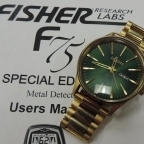

.thumb.jpg.77e4cb5bf39d44bdd2050d2edb7dfdb1.jpg)
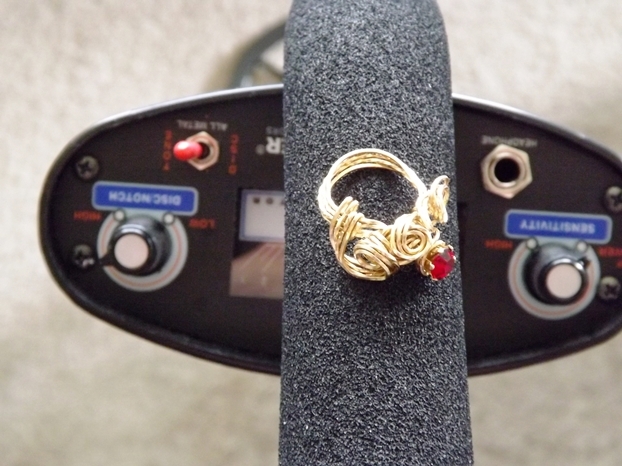
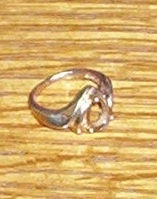


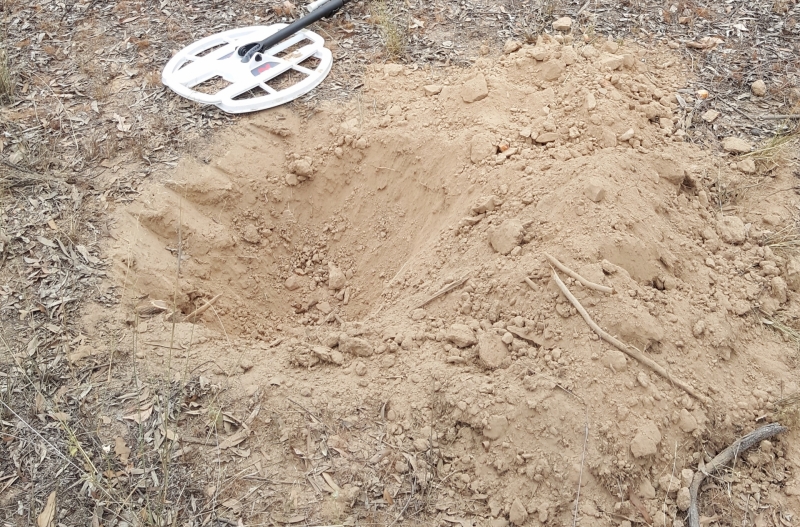
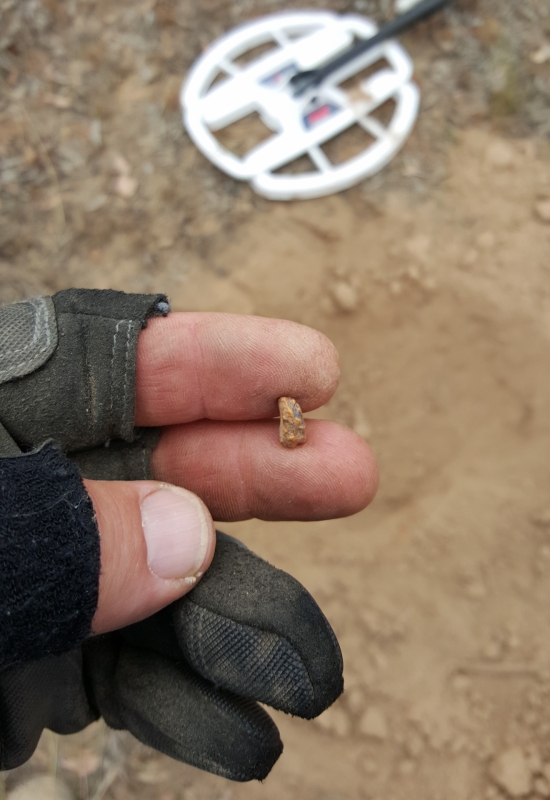
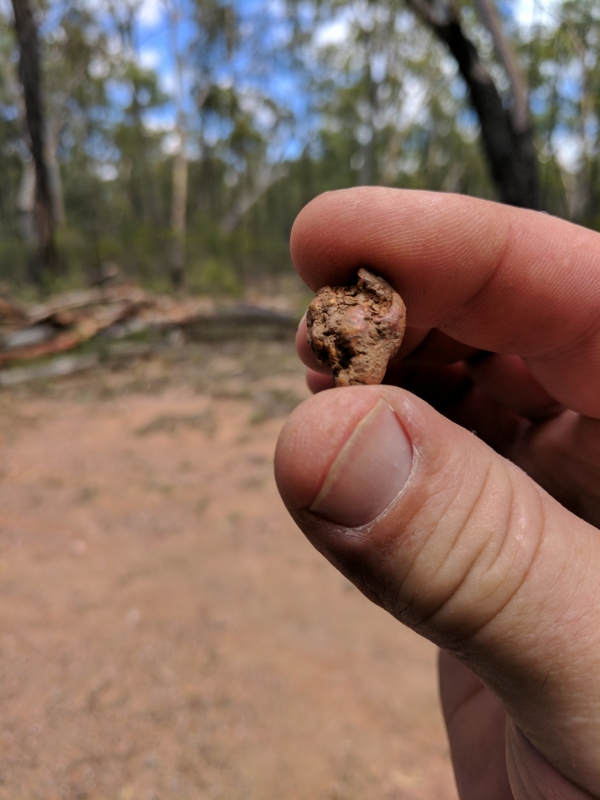
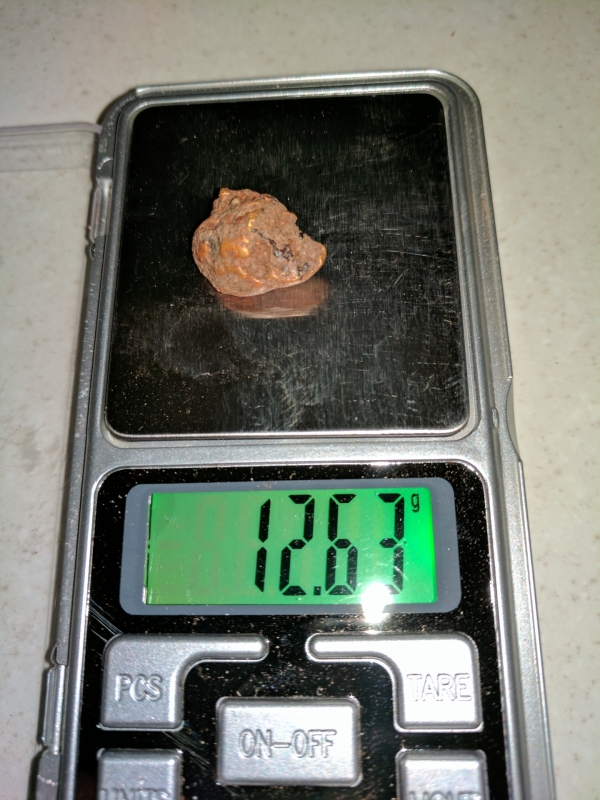

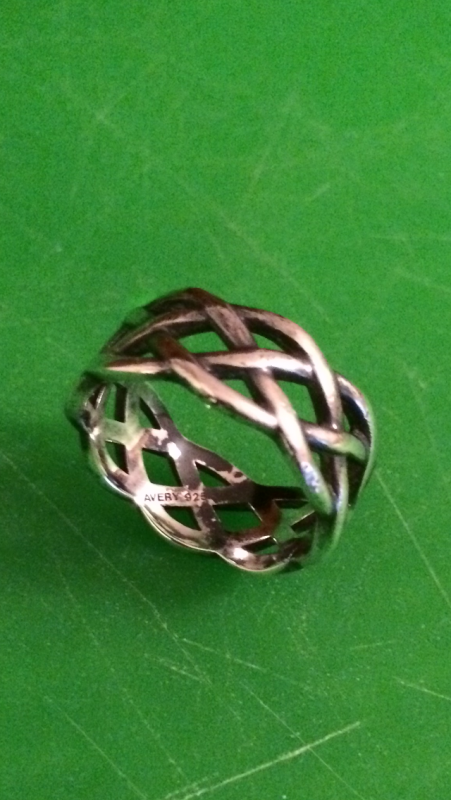
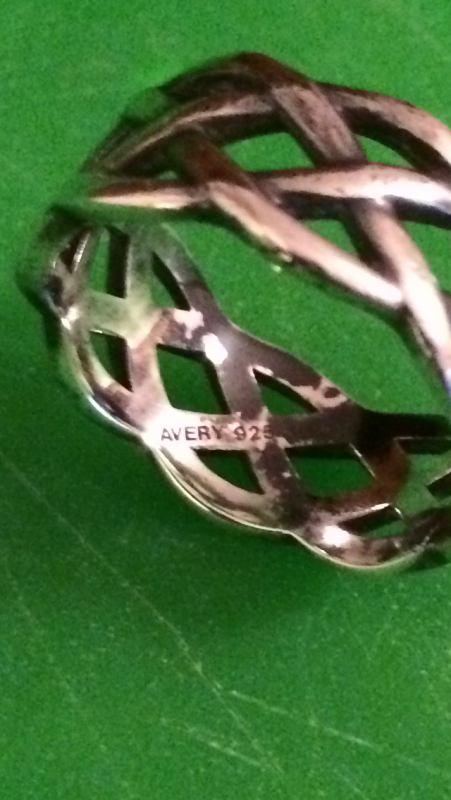
.thumb.jpg.834d08a5d63ebcd93a21f9a93d2e31f7.jpg)
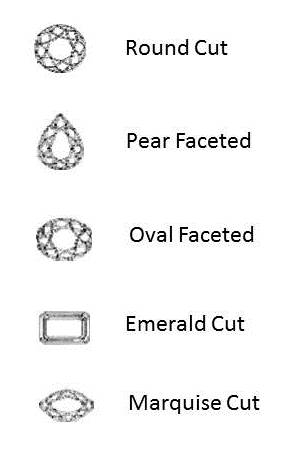
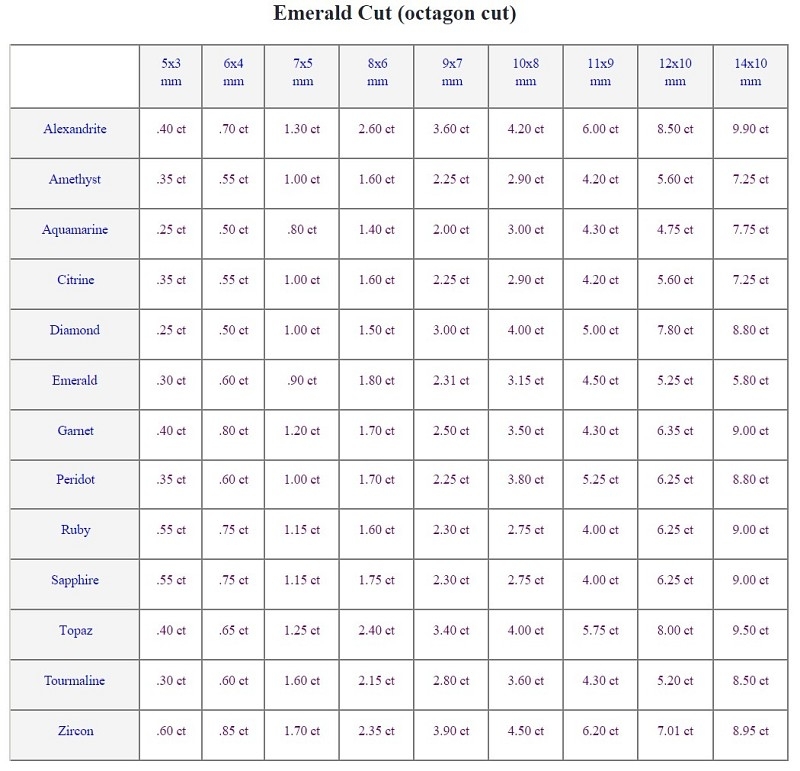
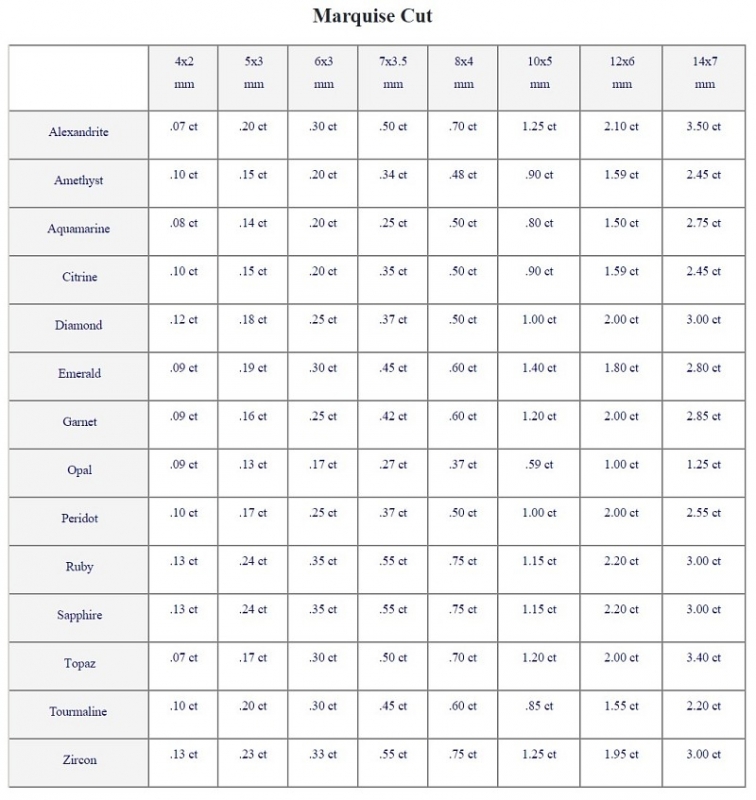
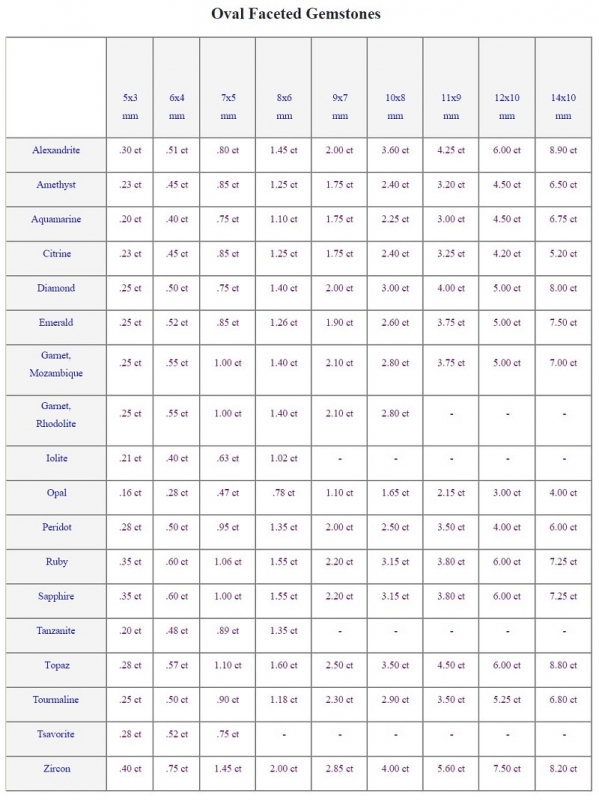
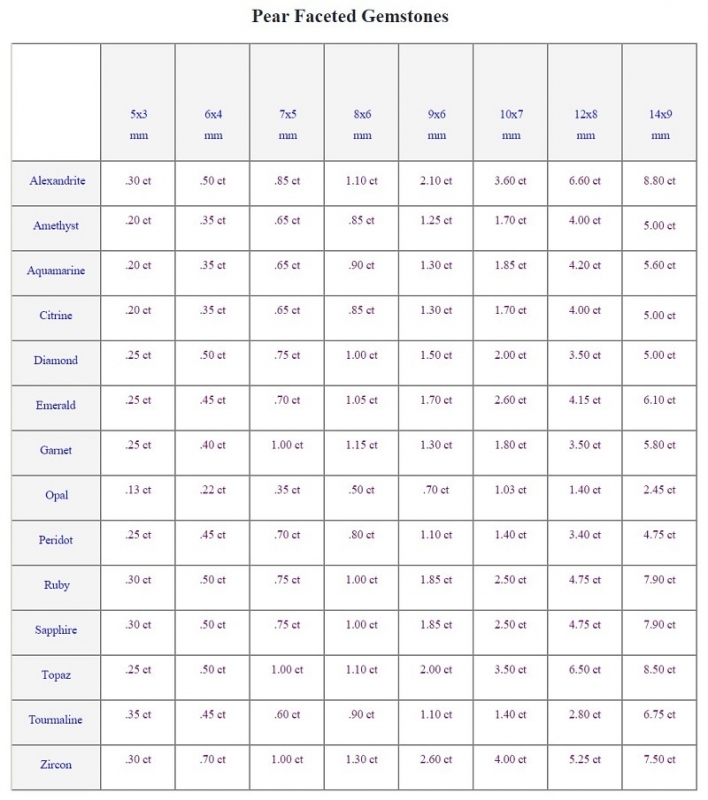
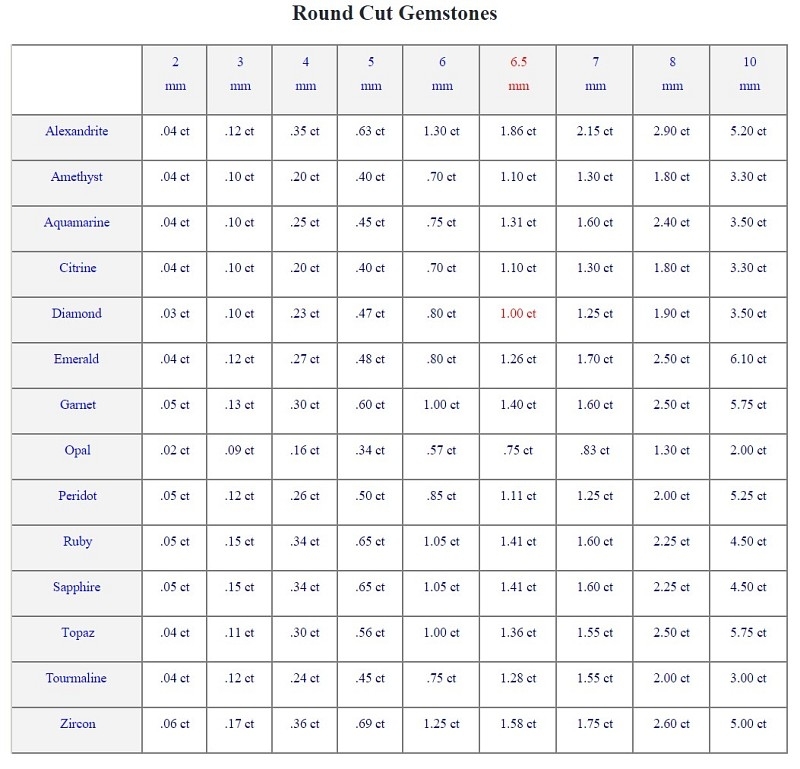
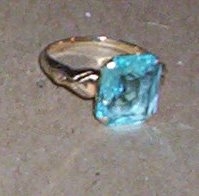

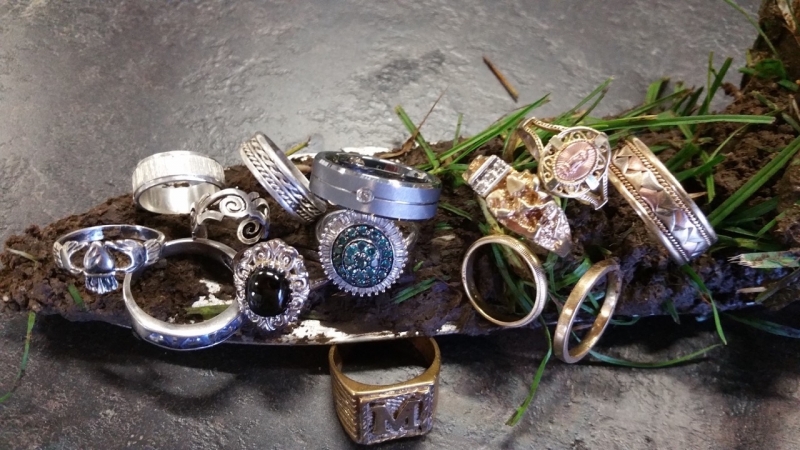
.thumb.jpg.933e484aa204cd31d73d83286706a097.jpg)
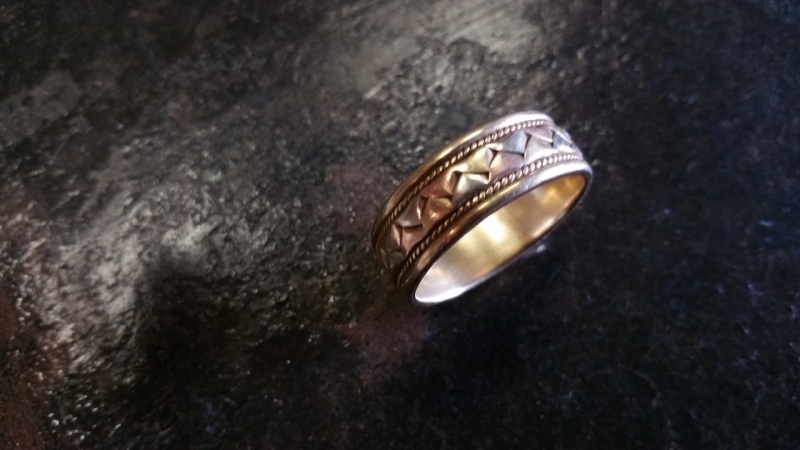
.thumb.jpg.52f6f4e4afc1bff69286e7f0d87344d9.jpg)
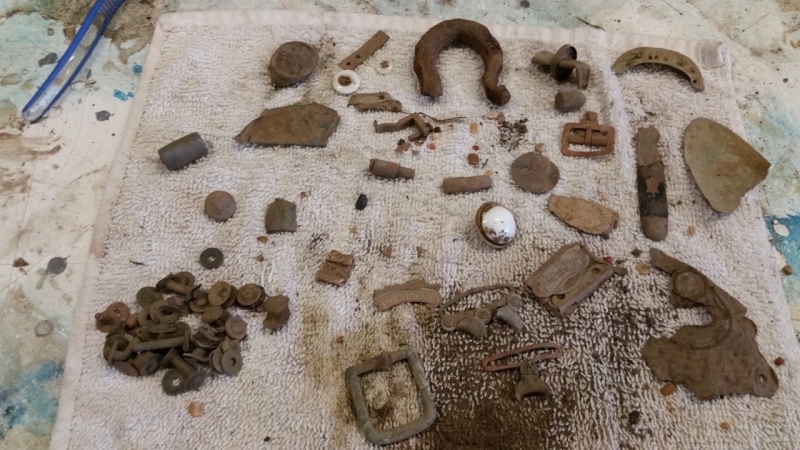
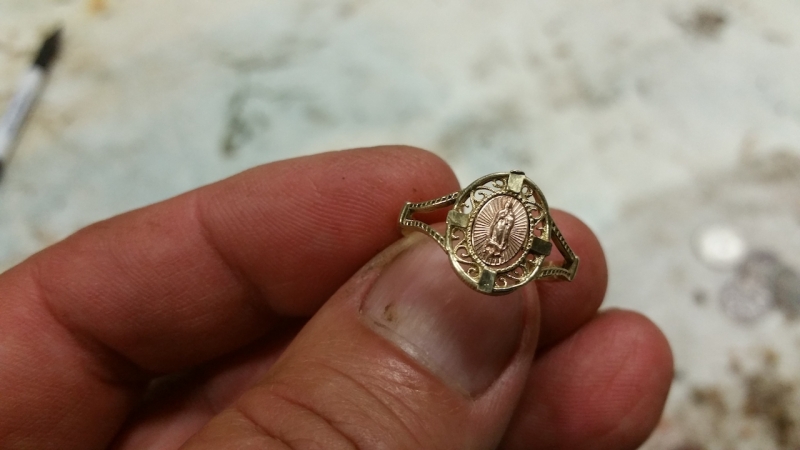
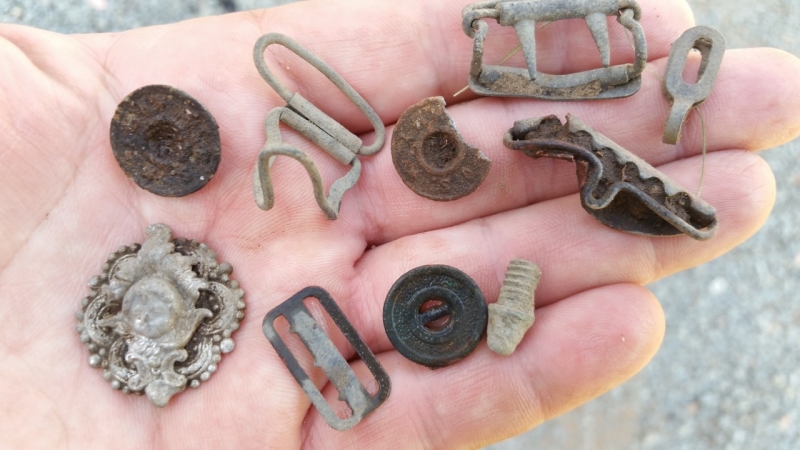
.thumb.jpg.81de7720e619a9ff606029e52ff96389.jpg)
